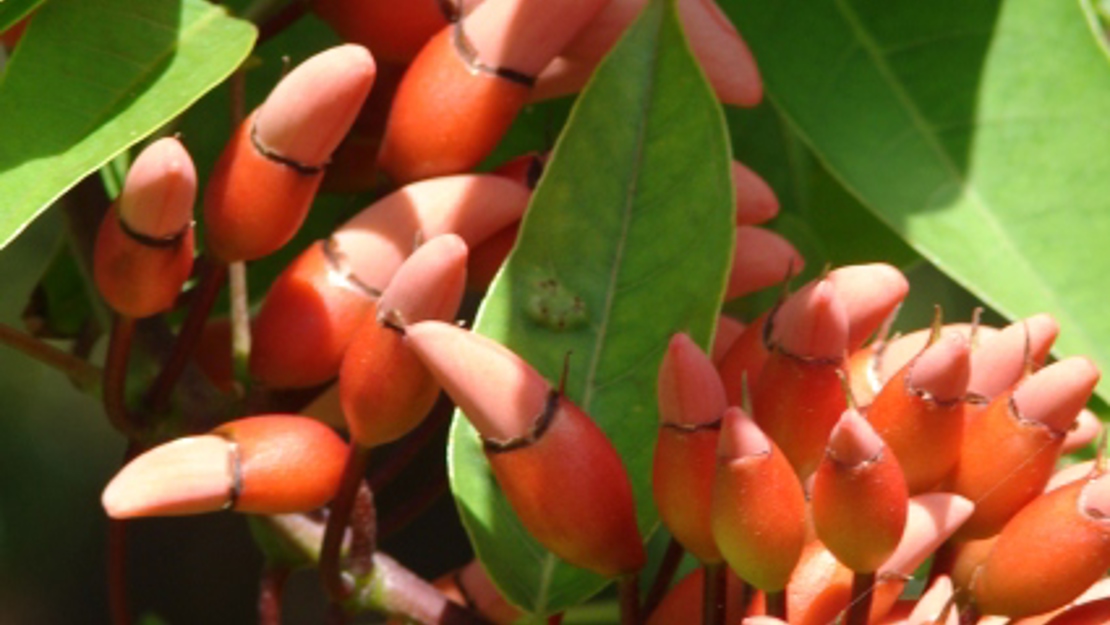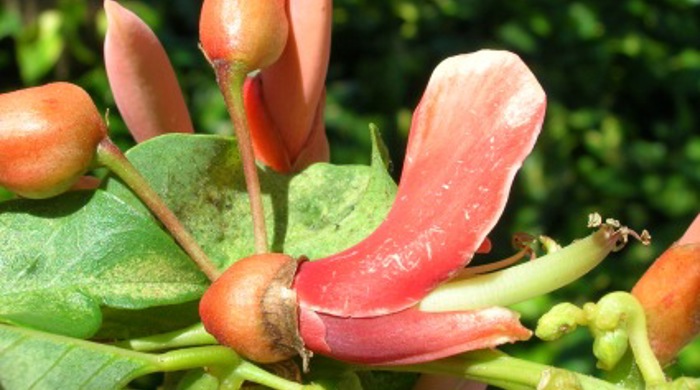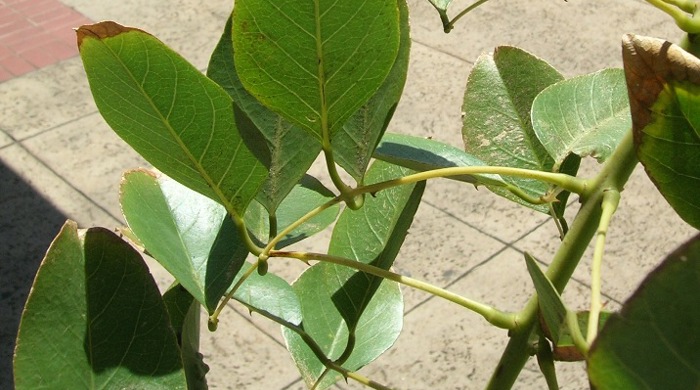Erythrina x sykesii
Coral tree
Also known as:
Cockspur coral tree
Family: Fabaceae
Origin: South America

Regional Pest Management Plan (RPMP) status
- Not a legally declared pest
General description
Small to medium-sized deciduous tree < 8 m tall. Stems are thorny and green, shiny and hairless when young, turning woody with age. Leaves are alternate, smooth, compound with three leaflets and borne on thorny petioles.
Flowers are borne in clusters and are red, with one large recurved petal and a keel formed by two lower petals fused together. Seed pods are elongated, < 22 cm long, green ripening to dark brown and contain large, hard, mottled dark brown seeds.
What you need to know
Although coral tree is not a legally declared pest plant, it may still be invasive in some situations. Consider lower risk alternatives for your garden, such as native plants.
Habitats
Coastal areas, riparian margins, wetlands, urban areas.
Dispersal
Sets seed. Vegetative spread from stem fragments. Seeds and stem fragments dispersed by water. Human-mediated dispersal through dumping of garden waste and deliberate plantings.
Impact on environment
May invade riparian areas. Nitrogen fixer.
Control
Site Management
Always treat standing plants, do not cut down as all stems will regrow. Allow to fully die before felling. Follow up treated areas 3 times per year. Encourage natural regeneration of native plants or replant treated areas where possible after 2-3 treatments to establish dense ground cover and minimise reinvasion.
Recommended approaches
Physical control
Method: Dig out.
Plant parts requiring disposal: All parts.
Disposal options: Remove to greenwaste or landfill.
Biocontrol
Biocontrol is currently not available for this species.
Community agrichemical control recommendations
Certified Handler/Experienced agrichemical user: Drill and inject trees with 10g metsulfuron-methyl per 1L of water if safe to do so. Drill 18mm holes (tangentially angled downwards) in a spiral up the trunk.
For 50mm stems drill one hole. For 100mm stems drill two holes. For larger stems drill holes 150mm apart. Foliar spray any stem fragment regrowth with 5g metsulfuron-methyl per 10L of water and 20ml penetrant.
Caution: When using any herbicide or pesticide please read the label thoroughly to ensure that all instructions and safety requirements are followed.





